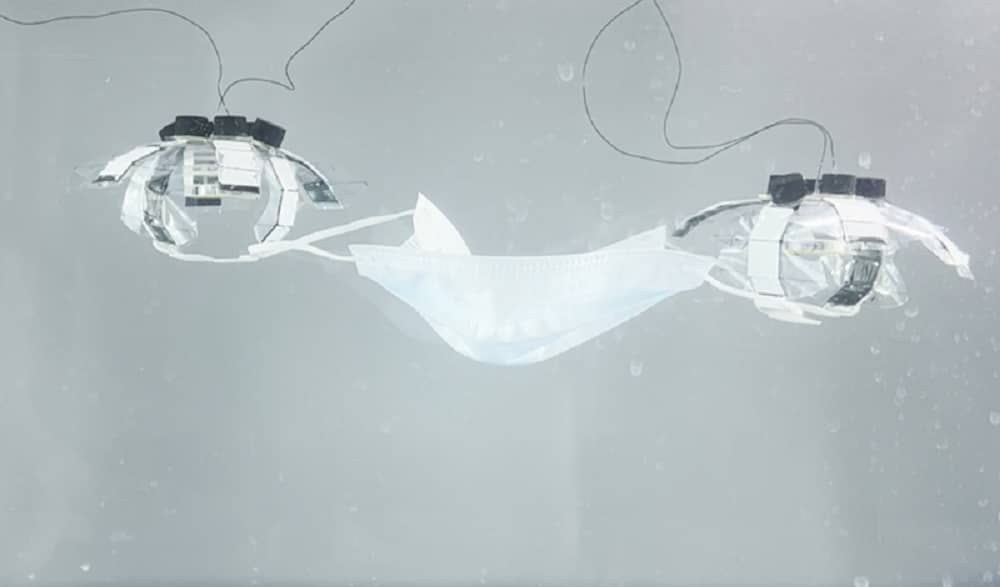More than 70% of the earth’s surface is covered in oceans, which are unfortunately highly polluted. One of the strategies to combat the mounds of waste found in these very sensitive ecosystems is to employ underwater robots to master the cleanup. However, existing prototypes typically use bulky, noisy actuators and limited configurations.
Now, roboticists at the Max Planck Institute for Intelligent Systems (MPI-IS) in Stuttgart have designed a jellyfish-inspired robot with which they hope one day to collect waste from the bottom of the ocean. The nearly noise-free Jellyfish-Bot can trap objects underneath its body without physical contact, thereby enabling safe interactions in delicate environments such as coral reefs.
About the size of a hand, the new robot consists of a series of six electrohydraulic actuators that serve as artificial muscles which power the robot. Electrically powered artificial muscles known as HASELs are basically liquid dielectric-filled plastic pouches that are partially covered by electrodes.
Applying a high voltage across an electrode charges it positively while surrounding water is charged negatively. This generates a negatively charged water that pushes the oil inside the pouches back and forth, causing the actuators to execute their flapping movement.

The artificial muscles contract and relax through periodic electric currents flowing through the wires, allowing the underwater robot to swim gracefully and create swirls underneath its body.
“When a jellyfish swims upwards, it can trap objects along its path as it creates currents around its body,” explains Tianlu Wang, a postdoc in the Physical Intelligence Department at MPI-IS and the first author of the publication. “In this way, it can also collect nutrients. Our robot, too, circulates the water around it. This function is useful in collecting objects such as waste particles. It can then transport the litter to the surface, where it can later be recycled. It is also able to collect fragile biological samples such as fish eggs. Meanwhile, there is no negative impact on the surrounding environment. The interaction with aquatic species is gentle and nearly noise-free.”
Jellyfish-Bots can move and trap objects without physical contact, operating either alone or with several in combination. Each robot works faster than other comparable inventions, reaching a speed of up to 6.1 cm/s. The robots only require 100mW of electricity, which means it doesn’t pose any harm to humans or aquatic life, even if the insulating layer around the body wears off.
Also, researchers were able to demonstrate that the robot could execute grasping motions when two of the actuators were brought toward each other. In addition, the two robots could work together to pick up more complicated items like a face mask, which is very difficult for a single robot alone.
For now, the Jellyfish-Bots need a wire to operate, but the team has already figured out modules for the battery and wireless communication parts so as to enable future wireless manipulation. Researchers tested their invention in the pond and could successfully steer it along. The team is now working on improvements that could offer more control over steering and mobility, especially in challenging oceanic environments.
Journal reference:
- Tianlu Wang, Hyeong-Joon Joo, Shanyuan Song, Wenqi Hu, Christoph Keplinger, and Metin Sitti. A versatile jellyfish-like robotic platform for effective underwater propulsion and manipulation. Science Advances, 2023; DOI: 10.1126/sciadv.adg0292
Noise-free Jellyfish-Bot could one day clean up our oceans
Source: Tambay News

0 Comments